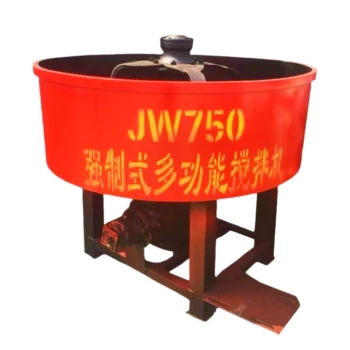Introduction
Construction professionals working in demanding environments—from mining sites to off-road projects—need equipment that delivers reliability under pressure. Flat-mouth concrete mixers have emerged as a superior solution, leveraging structural engineering innovations to outperform traditional drum mixers in stability, durability, and operational efficiency. This article breaks down the engineering advantages of flat-mouth designs and demonstrates their real-world impact through case studies and comparative analysis.
Engineering Advantages of Flat-Mouth Mixer Design
1. Load Distribution and Chassis Reinforcement
Flat-mouth mixers redistribute stress more effectively than round-mouth designs. Their box-like structure creates a wider load-bearing surface, minimizing pressure points that cause chassis fatigue.
Key enhancements:
- Reinforced frame joints: Welded steel supports at critical stress points (e.g., mixer-to-chassis connections) prevent cracks.
- Low center of gravity: The flattened profile lowers the weight distribution, reducing rollover risks on uneven terrain.
Ever wondered why some mixers handle potholes better than others? It’s all about how forces travel through the frame.
2. Material Selection for Enhanced Durability
These mixers use high-tensile steel alloys in their mixing chambers and discharge gates, resisting abrasion from coarse aggregates.
Proven resilience factors:
- Hardened steel liners: Extend service life by 30–40% compared to standard drum liners.
- Sealed bearings: Protect internal components from dust and slurry ingress in mining environments.
Visual metaphor: Think of the difference between a cardboard box and a reinforced shipping container—both hold materials, but one withstands rough handling.
Applications in Complex Environments
1. Case Study: Mining Site Operations
At a copper mine in Chile, flat-mouth mixers demonstrated:
- 98% uptime vs. 82% for drum mixers over 6 months.
- 30% faster discharge due to the streamlined gate design, critical for batch processing.
Challenge noted: Pre-screening aggregates is essential—flat-mouth designs can clog with oversized rocks (a limitation mitigated by using Garlway’s screening attachments).
2. Comparison with Traditional Drum Mixers
| Feature | Flat-Mouth Mixer | Traditional Drum Mixer |
|---|---|---|
| Discharge speed | 45–60 seconds | 90–120 seconds |
| Cleaning time | 10 minutes | 25 minutes |
| Terrain stability | Excellent | Moderate |
Why this matters: On a highway project with tight deadlines, faster cleaning and discharge can save 12+ labor hours per week.
Conclusion: Matching Technology to Job Demands
Flat-mouth mixers excel where structural integrity and efficiency are non-negotiable. For contractors working in:
- Rugged terrain (e.g., wind farms, mountain roads)
- Time-sensitive pours (e.g., industrial flooring, bridge decks)
Actionable tip: Pair your mixer with Garlway’s winch systems for easier material handling in confined spaces.
By prioritizing engineered durability over conventional designs, professionals gain equipment that works as hard as their teams do.
Products You Might Be Looking For:
View durable flat-mouth concrete mixers
Explore portable concrete mixing solutions
Check out mobile small concrete mixers
Discover ready-mix concrete plants
See high-efficiency batching plants
Related Products
- Portable Concrete Mixer Machine Equipment for Mixing Concrete
- Hydraulic Concrete Mixer Machine Cement Mixing Equipment for Mixture Concrete
- Concrete Cement Mixer Machine Drum Mixer for Construction
- HZS25 Best Cement Mixer for Quick Mix Concrete at Bunnings
- Construction Products Concrete Plant Machine Mixing Concrete Mixer
Related Articles
- How to Diagnose and Prevent Sensor Resistance Failures in Concrete Mixing Equipment
- How to Verify Fasteners and Connectors in Concrete Mixers: A Safety-First Approach
- How to Prevent Cold-Weather Lubrication Failures in Concrete Mixing Stations
- How to Prevent Structural Failures and Explosions in Concrete Plants: A Safety-First Guide
- How to Prevent Buffering Component Failures in Concrete Mixing Cylinders: Proactive Strategies That Work




















